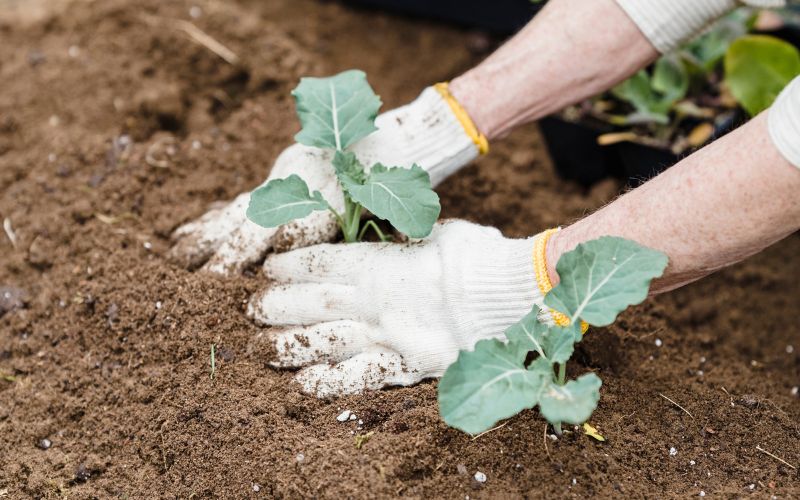Transplanting vegetable seedlings allows them to establish stronger root systems, which helps them access more nutrients and water from the soil. This can lead to healthier, more productive plants that produce better-quality vegetables.
To make the most of transplanting, you should transplant your vegetable plants at the right time. In general, it should be the appropriate season, weather conditions should be mild, your plants should be still young, and your garden must be ready.
Type of vegetable, your climate, and season
For warm-season vegetables like tomatoes, peppers, and eggplants, the best time to transplant is after the last frost date in your area, when the soil has warmed up and the weather is consistently warm and at 60°F (15.5°C) at a minimum. This is typically in mid to late spring or early summer, depending on your location.
For cool-season vegetables like broccoli, cauliflower, and lettuce, the best time to transplant is during the fall or early spring, when the weather is cooler and milder. These vegetables can also be transplanted in late summer for a fall harvest.
When are vegetable plants ready for transplanting?
It’s important to transplant vegetable plants when they are still young and small, ideally when they have 2-4 true leaves. This is usually when they are around 4-6 weeks old, but again, it can vary depending on the type of vegetable and growing conditions. Transplanting when young allows the plants enough time to establish roots in their new location before they start to grow and produce.
Best weather conditions for transplanting
Transplant shock is a condition that can occur when a plant is transplanted from one location to another. During the transplanting process, the plant may experience stress due to changes in its environment, such as changes in light, temperature, humidity, soil conditions, and water availability. As a result, the plant may temporarily stop growing, lose some of its leaves, and become more vulnerable to pests and diseases.
You can help your vegetable plants to recover from transplant shock and establish themselves in their new location by transplanting them when the weather is mild and there is plenty of moisture in the soil.
It’s very important to avoid transplanting vegetable plants during extreme weather conditions, such as heatwaves, droughts, or heavy rains, as this can stress the plants and hinder their growth. If there is a hot and sunny day forecasted, it’s best to wait until the weather cools down a bit to avoid heat stress on the plants. Similarly, if there is a period of heavy rain or strong winds forecasted, it’s best to wait until the weather has passed to avoid damaging the plants. What happens if you wait too long?
Transplanting during cloudy or overcast days is best as it can help reduce stress on the plants and increase their chances of survival.
Is your garden ready for transplanting?
Before you transplant your plants, you should have identified the most suitable location in your garden, based on the requirements of the type of vegetable that you’re transplanting. This includes making sure that your plants will get enough of sunlight, air circulation, and easy access to a source of water.
It’s also important to prepare the soil properly before transplanting to ensure that the plants have access to the nutrients and water they need to grow. This can involve adding compost or other organic matter to the soil, as well as ensuring that the soil is well-draining and has the appropriate pH level for the particular vegetable plant.
In conclusion, transplanting vegetable plants at the right time is crucial for successful growth and harvest. By considering factors such as the type of vegetable, climate, season, and weather conditions, as well as preparing your garden properly, you can ensure that your transplanted vegetable plants have the best chance of thriving in their new home.

